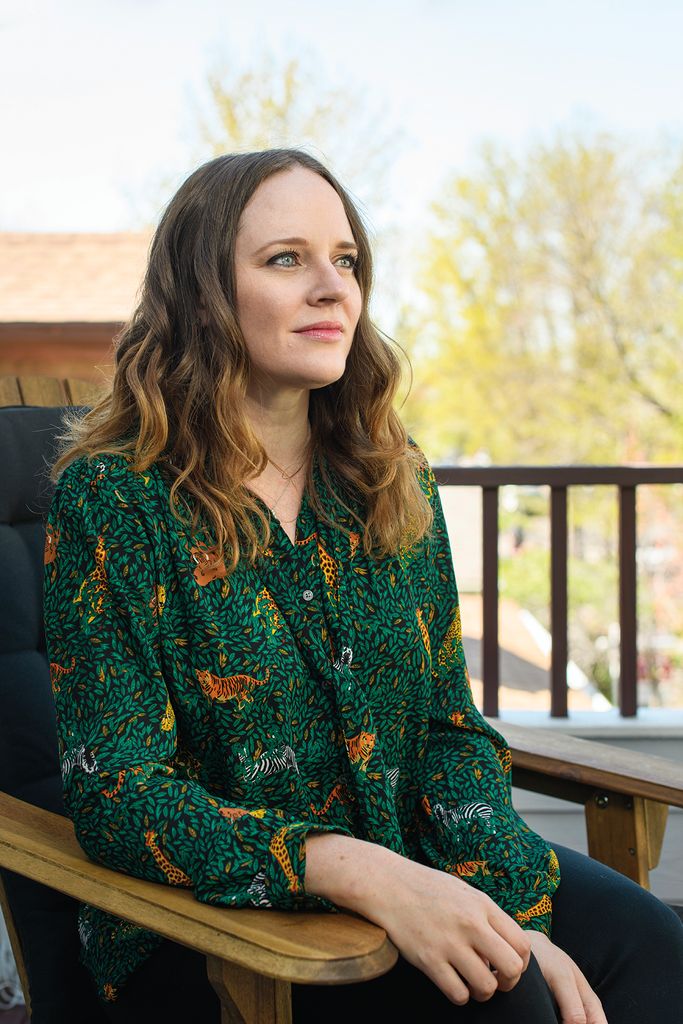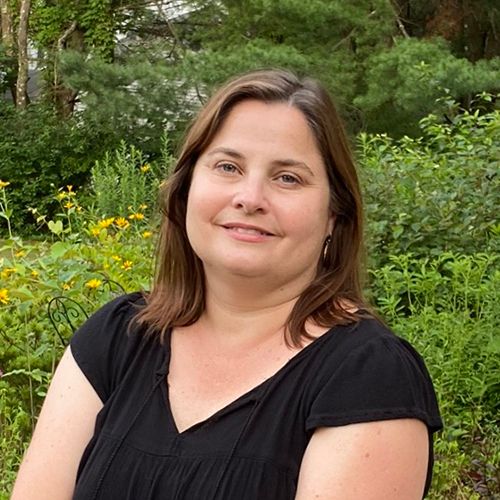Confronting Extremism
Leanne Erdberg Steadman (′08) focuses on peace to prevent terrorism.

Confronting Extremism
Leanne Erdberg Steadman (’08) focuses on peace to prevent terrorism.
In 2015, Al-Shabaab, a Somali extremist group, launched the worst terrorist attack in Kenya since the 1998 bombing of the US embassy there.
Moving among dorms at a local university, terrorists separated Christian students from Muslim students and killed the Christians. By the end of the attack, 147 students were killed.
In response, a local network of women called Sisters Without Borders jumped into action. They connected community leaders and officials to de-escalate ethnic tensions and reach agreements on how to improve security. They are now helping the government of Kenya revise its strategy on countering violent extremism to include the role of women.

This type of collaboration between government leaders and a women’s network is an example of a “powerful peacebuilding tool” to prevent terrorism, says Leanne Erdberg Steadman (COM’05, LAW’08). As director of countering violent extremism at the US Institute of Peace, she leads the institute’s work to better understand the causes of violent extremism and methods to prevent it. She also builds partnerships with groups like Sisters Without Borders and develops tools that emphasize pathways for individuals to disengage from terrorist organizations and reenter society.
Erdberg Steadman, a former counterterrorism advisor to the undersecretary of state in the US Department of State, brings more than a decade of experience with alternative approaches to fighting terrorism. “Instead of focusing on preventing terrorist attacks and arresting violent people, a peacebuilding approach involves going further upstream to stop people from joining extremist groups in the first place,” she explains.
“No community in the world is totally immune from the impact of terrorist organizations. Since September 11, we have seen different types of violent extremist organizations emerge around the world, even in countries that never before experienced this problem. It’s a huge loss to society in terms of the young people who could have contributed to their communities but were instead mobilized into a life of harm,” says Erdberg Steadman, who focuses on sub-Saharan Africa, South Asia, and the Middle East.
At the institute, she takes a holistic view of the role of peace in national security. “There is room for a more human rights–oriented approach, but it involves collaborations and different notions of justice and accountability for people who leave extremist organizations. We have peacebuilding tools and strategies to help that process of disengagement and reconciliation.”
A Community Approach to Peacebuilding
From ISIS and Boko Haram to the Taliban and Al-Shabaab, extremist groups tend to emerge and thrive in regions of instability and political conflict. Erdberg Steadman’s main peacebuilding tool is the provision of research, training, and expertise to practitioners and policymakers on the causes of extremism and local solutions.
Leading a global research consortium called the Resolve Network, which is housed at the institute, she focuses on why violent extremism is expanding in a particular community, whether it poses a threat to stability, and what policies and actions will effectively counter it. Research topics range from conflict mitigation efforts in sub-Saharan Africa to the dynamics of ethnically motivated extremism in the Middle East.
There are individuals who were part of violent groups, but their future does not have to be defined by their past. It sounds lofty, but there can be restoration at the end of someone’s commitment to violence.
One of the institute’s long-standing strategies involves working with women in local communities. “The goal is to empower women who know their communities best and have insight into how individuals could be radicalizing. We try to develop women’s agency to impact their own national governments,” explains Erdberg Steadman.
The work began in Kenya and Nigeria through the Women Preventing Extremist Violence program and has grown into Sisters Without Borders. “This network of community leaders throughout East Africa has achieved previously unknown levels of cooperation, thwarted attacks, and changed the trajectories of people’s lives,” she says.
Women’s roles are often underestimated, says Erdberg Steadman, “as they may be perceived only as victims of violence rather than potential conscripts or powerful recruitment disruptors. We help women find their own paths and elevate their voices in preventing violent extremism, rather than joining it.”
Additional strategies involve disengagement and reconciliation. “There are individuals who were part of violent groups, but their future does not have to be defined by their past,” she says. “It sounds lofty, but there can be restoration at the end of someone’s commitment to violence. I am proud of how we have been able to introduce a new way to think about reconciliation because there is space for a peacebuilding lens.”
As for policing and military force, she says that any abuse or corruption can lead to distrust and the radicalization of individuals, making the problem worse. The institute seeks to bring together government officials and citizens to work on the root causes of the problems and cooperatively rebuild security. It also developed a model for proactive community policing with a focus on increasing trust.
While her focus is international, Erdberg Steadman points out that much of her work at the institute is applicable to extremism in the US. “Research shows that people join extremist groups for meaning, purpose, and significance. People become deeply bonded with these organizations, which provide a worldview that makes sense to members and diffuses blame onto others. These characteristics are consistent with violent extremism in the US.”
Peacebuilding strategies can help people change their views, but societies must find ways to reconcile people who leave those groups. “The vast majority of individuals who are extremist in the US are not committing acts of violence and won’t be prosecuted,” she says, “but communities still need ways to bring them back into society. They need to fulfill some of those same human needs—like purpose and validation—that were so twisted by extremist groups. There are many good groups in the US working on this, but more can be done.”
“We can learn a lot from peacebuilding experiences in other countries,” she adds, “like the importance of community dialogues. People with hateful beliefs do not need to have them for life.”
A Passion for Protecting Human Rights
Erdberg Steadman’s legal career is “deeply connected” to her family’s history of escaping persecution. Her father fled Poland in the 1960s, during that country’s anti-Jewish campaign. Before that, his parents were Holocaust survivors. It also relates to her experience growing up in Miami, where she met many refugees who were forced to leave their home countries. “Those experiences shaped who I am and my strong beliefs in the importance of human rights and respecting individuals’ dignities,” she says.
In law school, she discovered the “uniqueness of America’s democracy” when it comes to protecting human rights. “Even when it fails to do so,” she says, “there are levers for change in our democracy, and citizens can demand new ways to right past wrongs. I decided that I wanted to focus my career on protecting these rights.”

After graduation, Erdberg Steadman began a Presidential Management Fellowship, which involved rotations in the US Department of Homeland Security and the US Department of State. “That was my first foray into foreign policymaking and counterterrorism. At the state department, I worked on portfolios focusing on the Middle East and Africa, and I was able to spend time in the field to better understand our goals and strategies from a counterterrorism perspective.”
As director for African Affairs for the National Security Council and later counterterrorism advisor to the undersecretary of state, Erdberg Steadman learned the value of building global coalitions to prevent people from joining terrorist organizations. “What would it look like if we empowered communities to push back on hateful speech instead of just arresting people?” she asks. “What if we could off-ramp those individuals to other livelihoods? That flipped the counterterrorism paradigm.”
She also traveled with the undersecretary around the world to meet with individuals who had survived attacks or had been beaten or jailed for their views. “There are many places where [both] terrorists and governments are abusing the rights of community members, and it is sometimes hard to tell the good guys from the bad guys. It’s important to hear different perspectives when you are defining partners in counterterrorism.”
Returning to the White House for the end of President Barack Obama’s final term, Erdberg Steadman worked with the National Security Council as senior advisor to the deputy homeland security advisor, where she crafted responses to security challenges such as natural disasters, terrorism, and global health. She even worked on a global pandemic exercise, an “eerily prescient” project in light of the COVID-19 pandemic.
After years of government and policymaking experience, she decided to apply her passion for protecting human rights at the Institute of Peace. “I was excited to join the institute because peace provides an important lens and tools to counter the idea that systemic change is only possible through violence. It’s much more practical and beneficial for society to have a peace mentality.”
Looking back, Erdberg Steadman credits BU Law with helping her discover this unique career track, particularly an international law class with Professor Robert Sloane. “It was post-
September 11 and I had spent the summer before law school traveling around Europe, having conversations with students in other countries about war and conflict. That was starting to percolate, and when I took International Law, it all clicked into place. I knew this was going to be the foundation for my legal career.”

